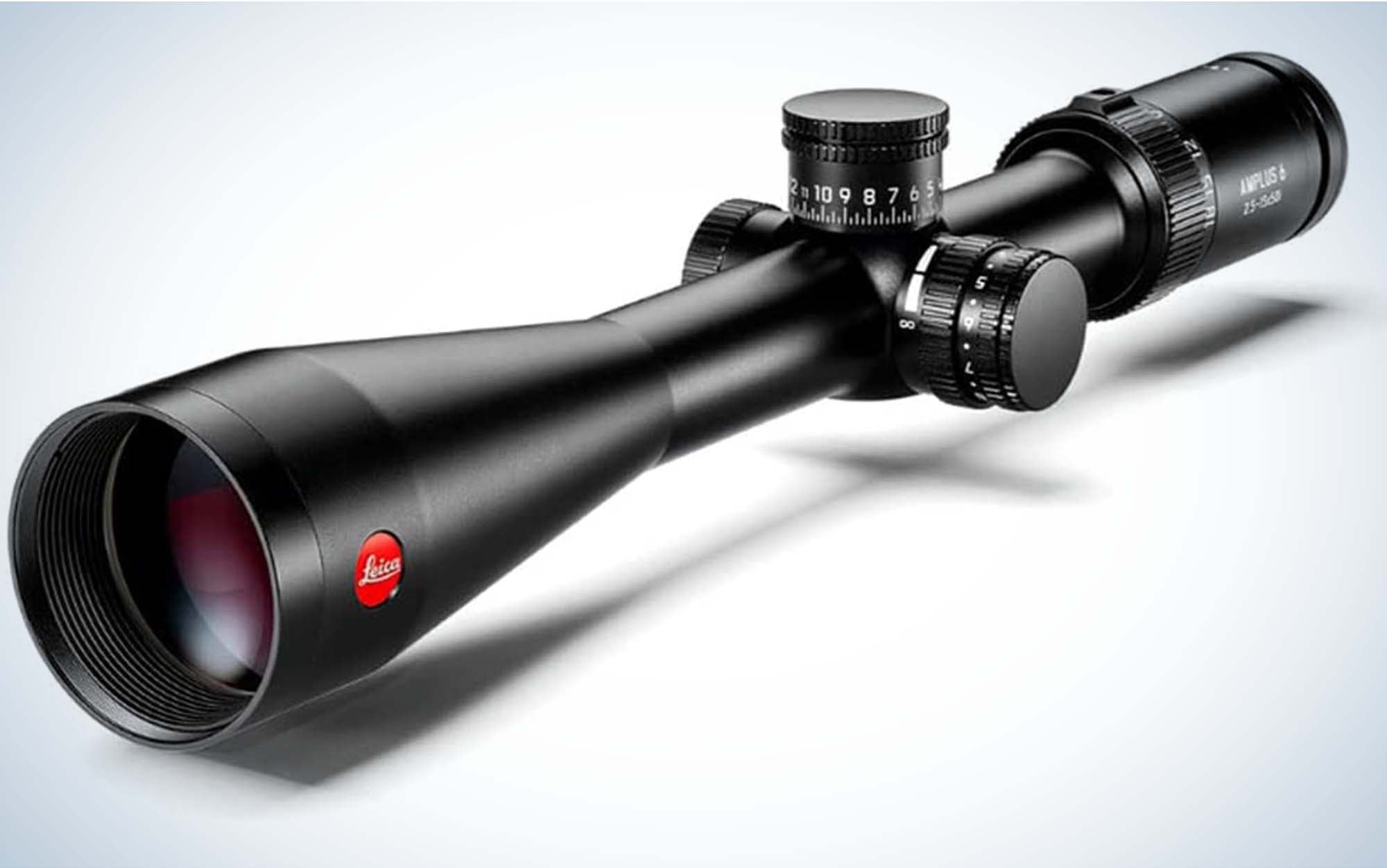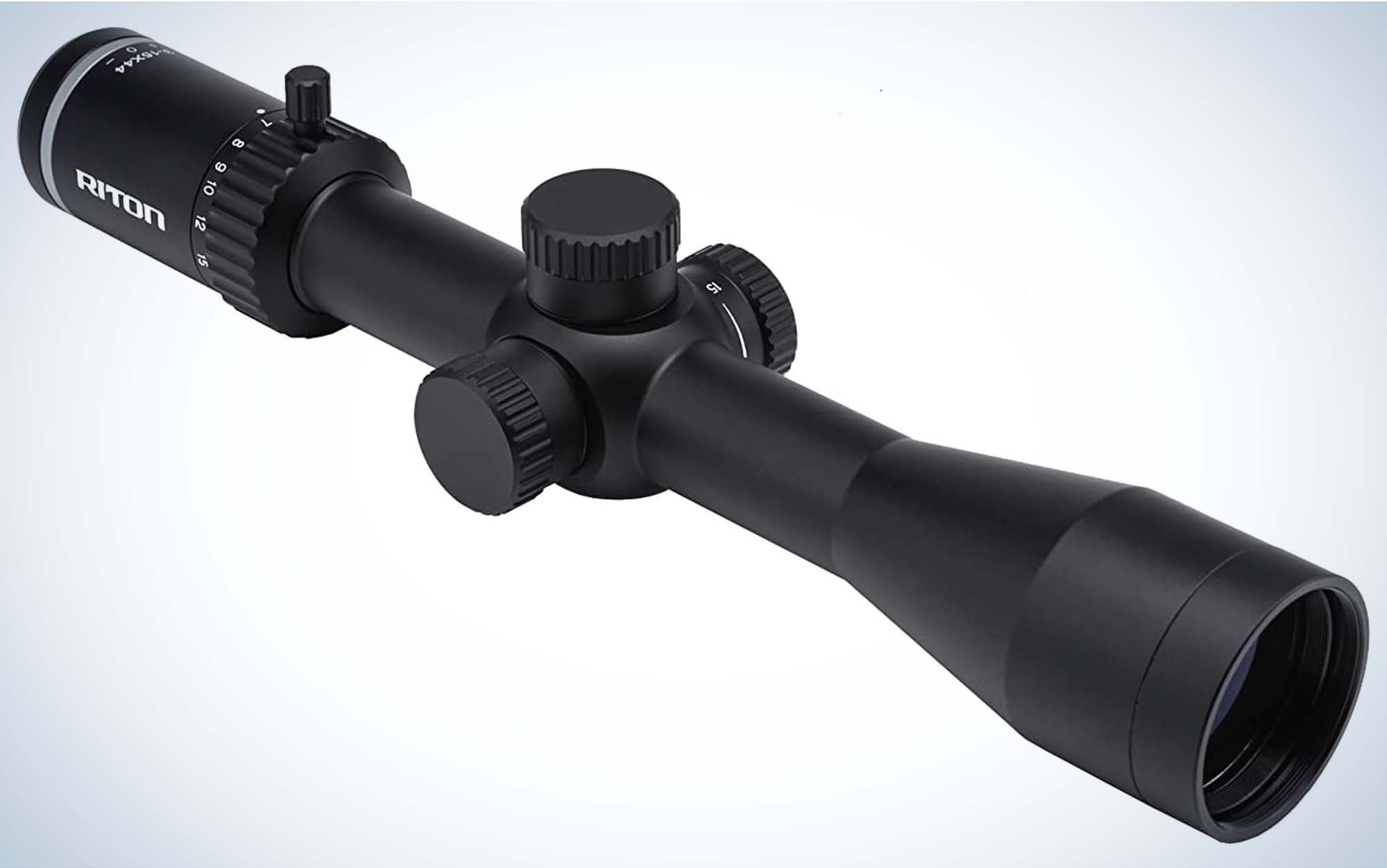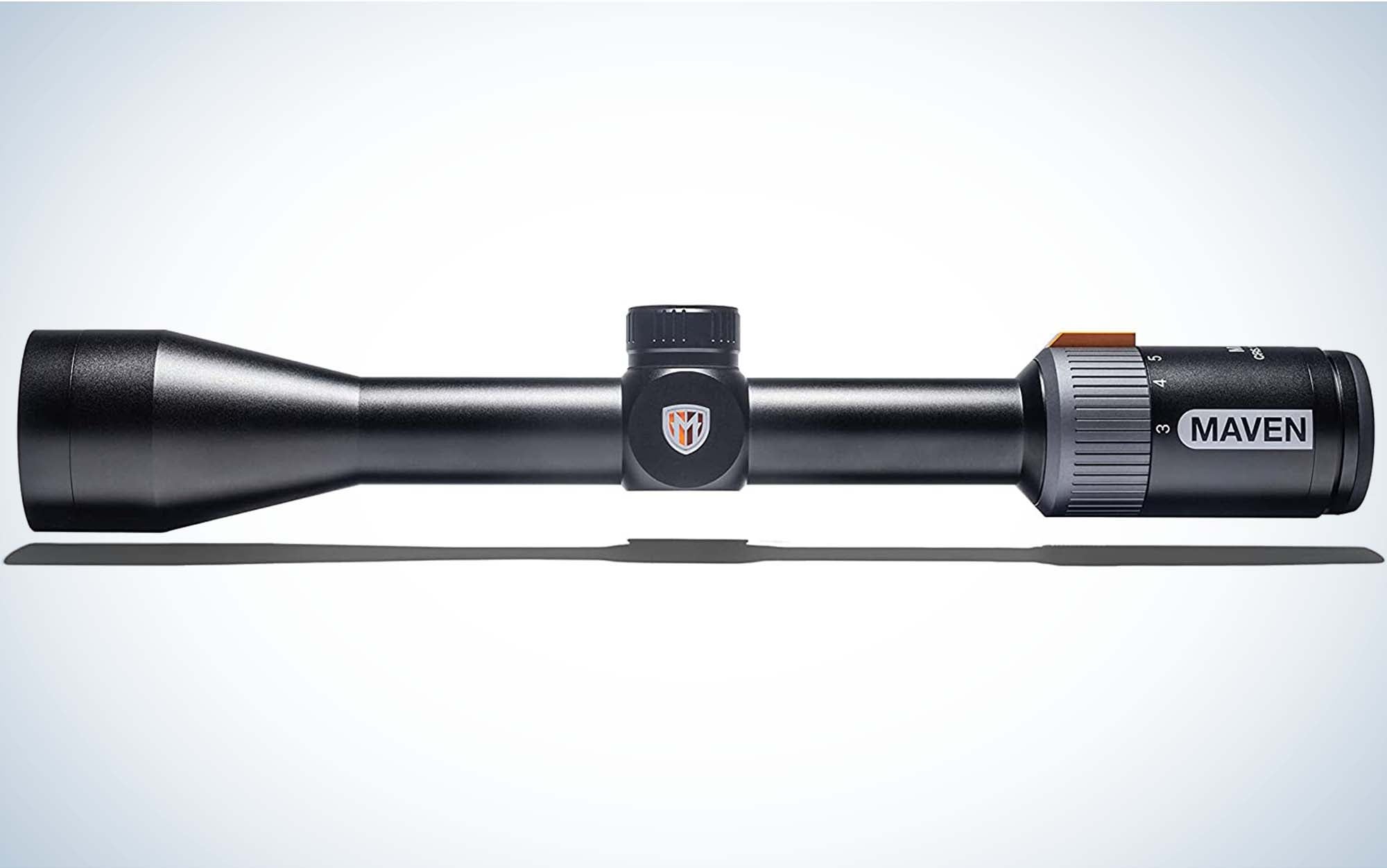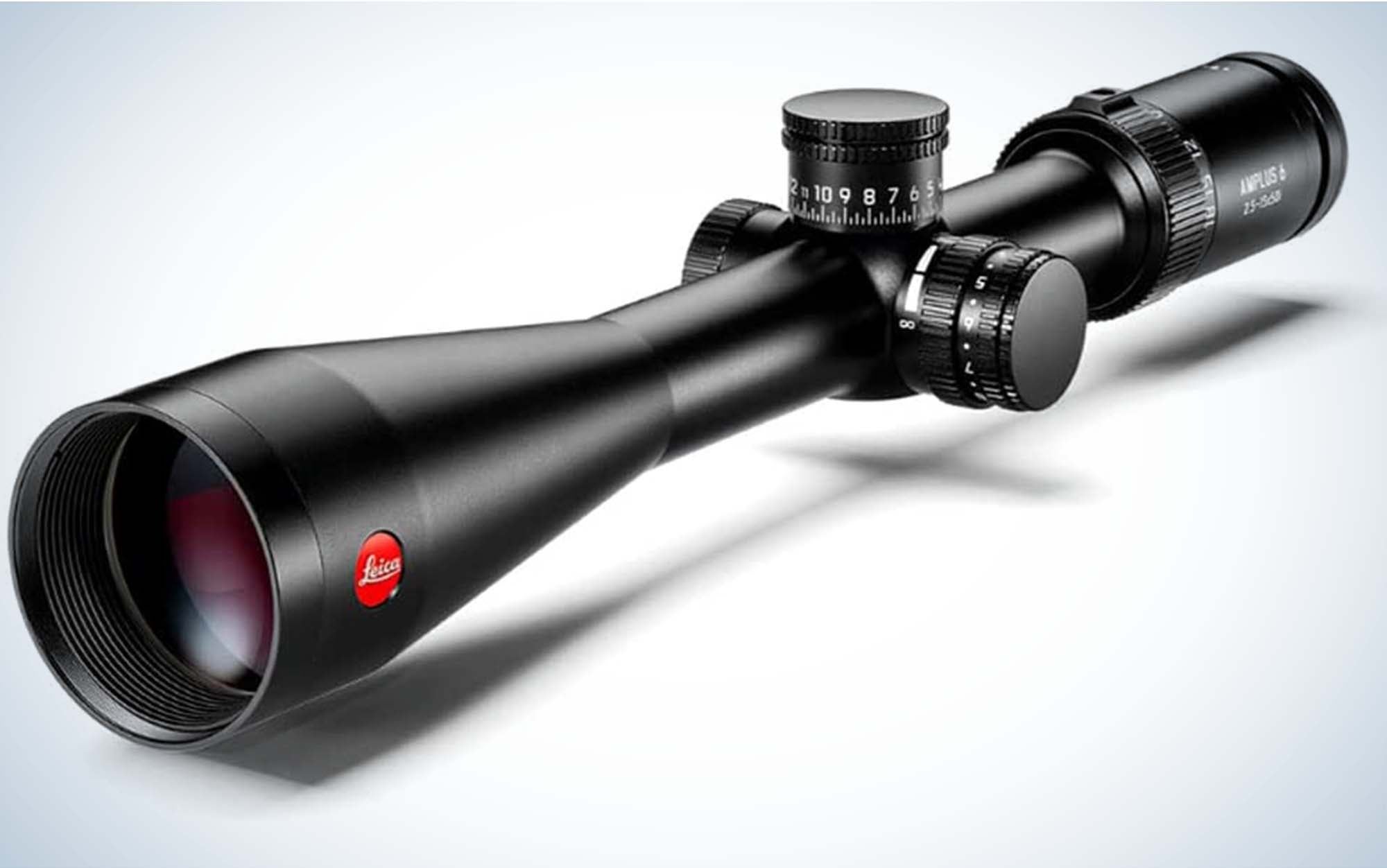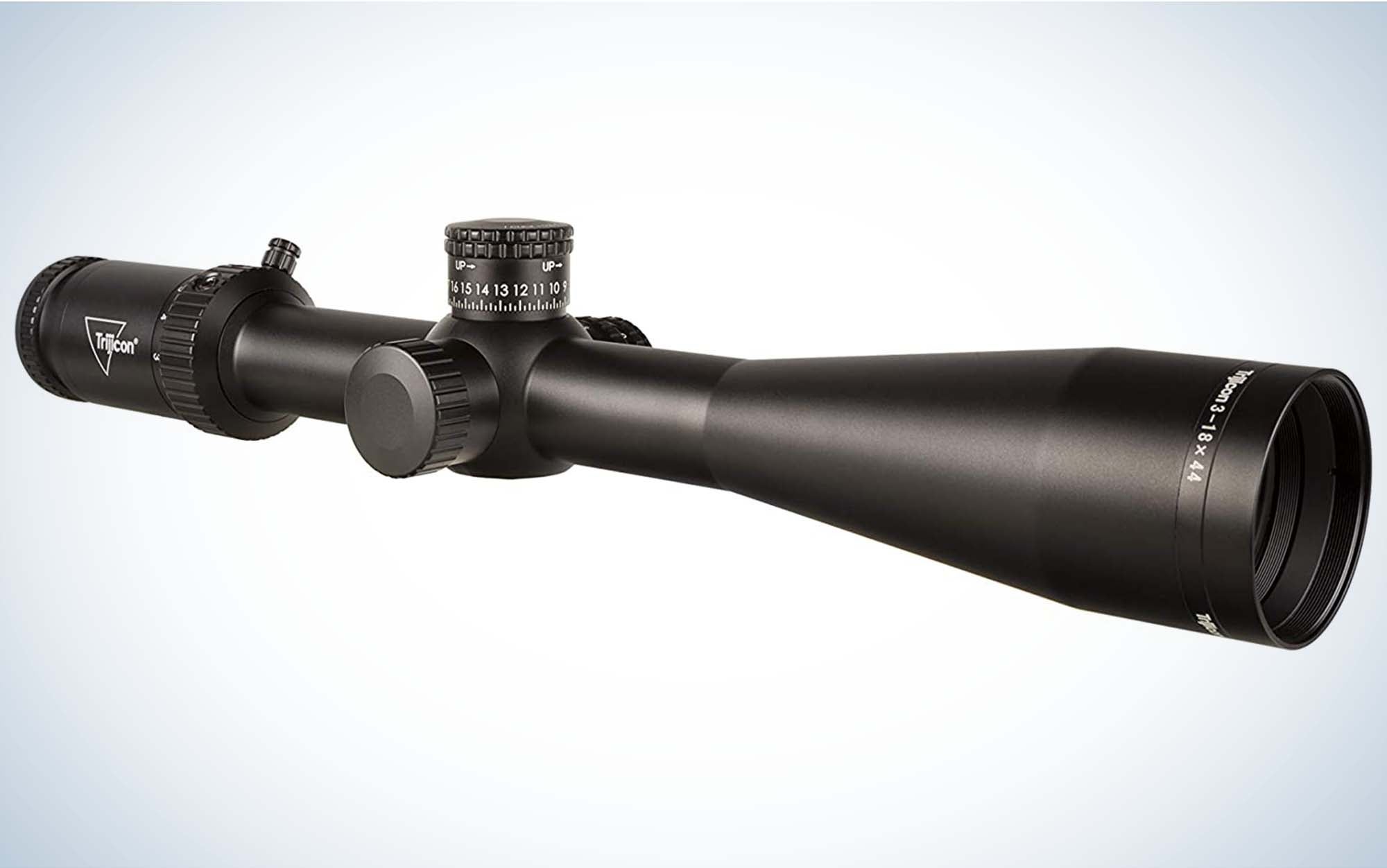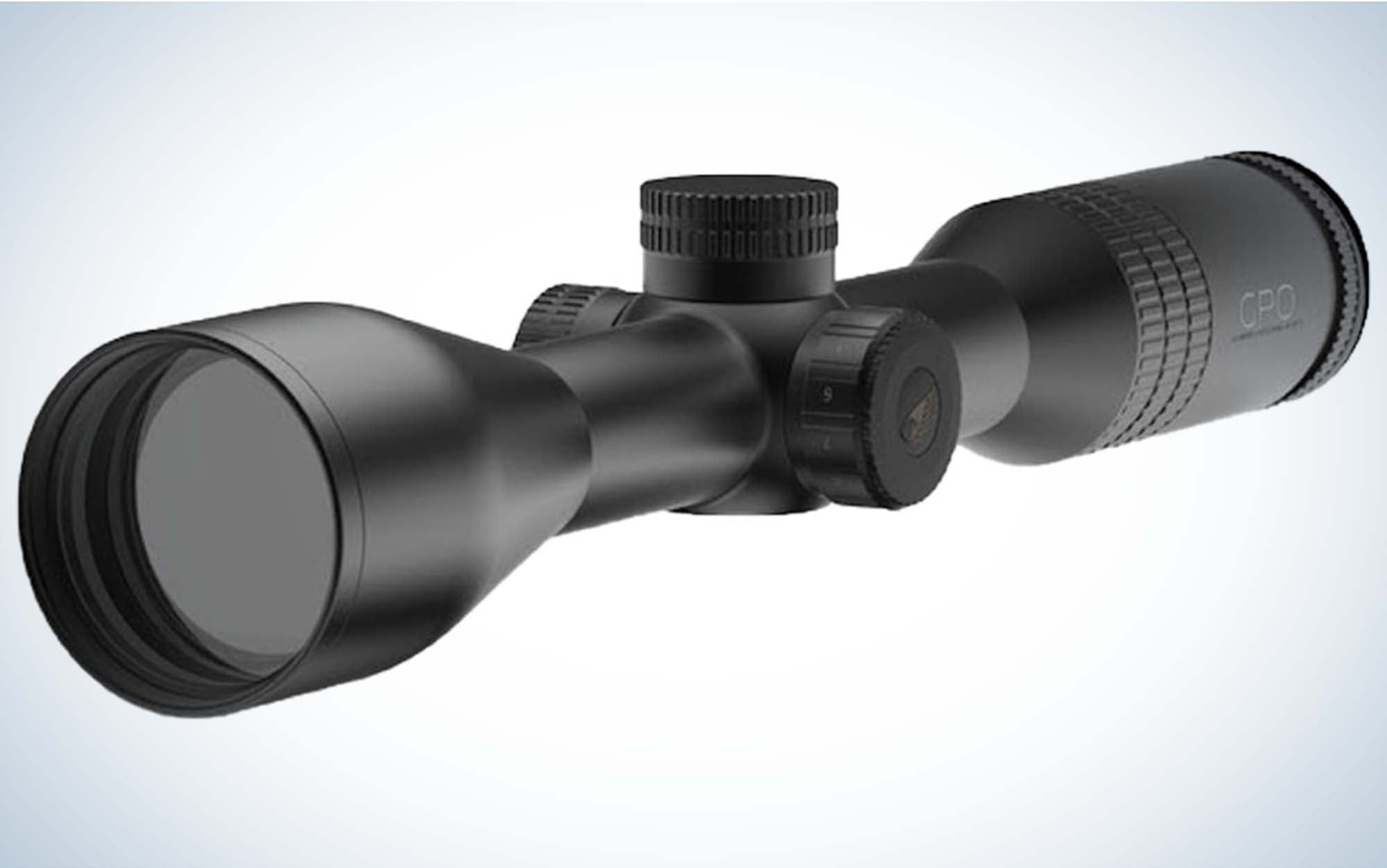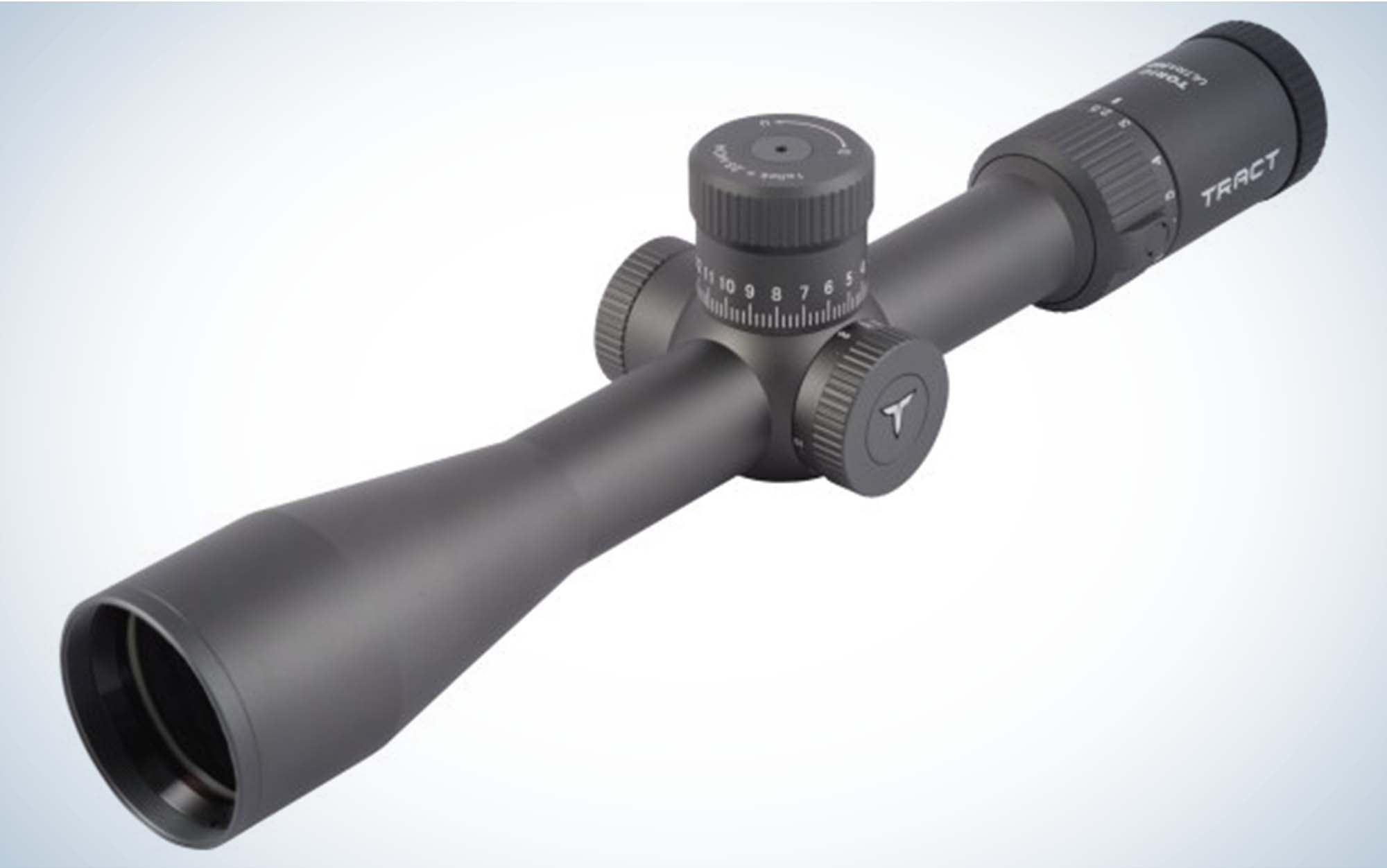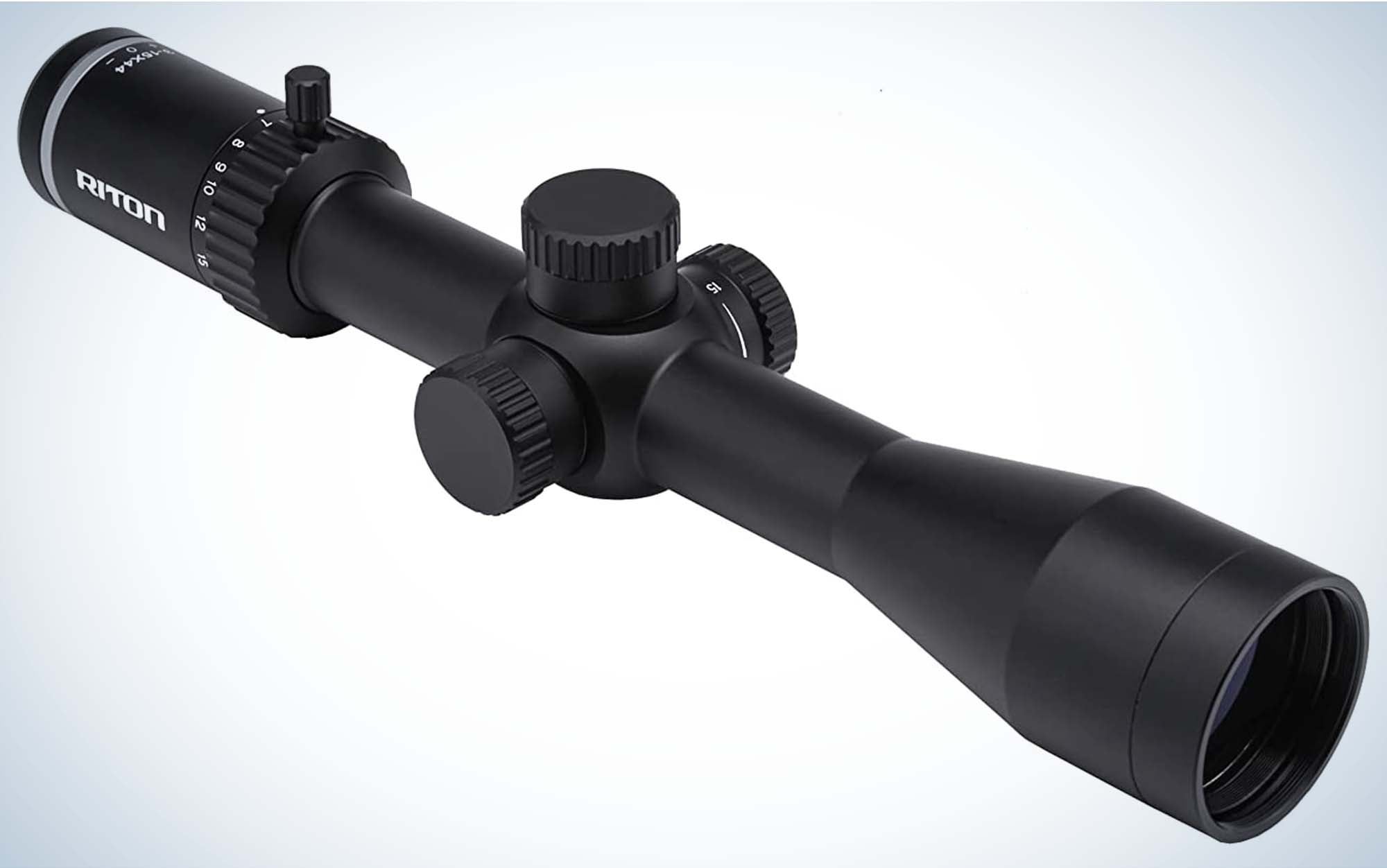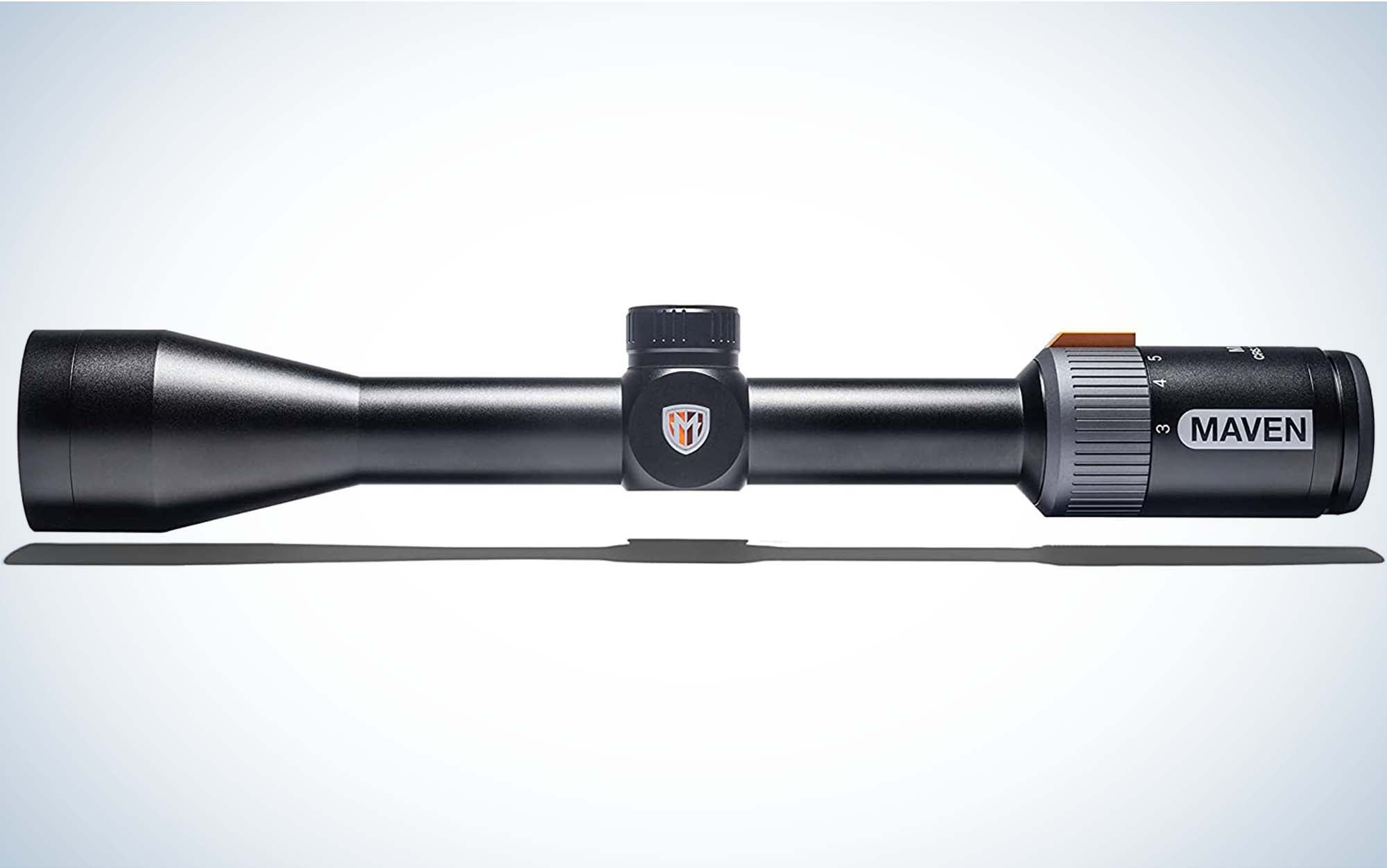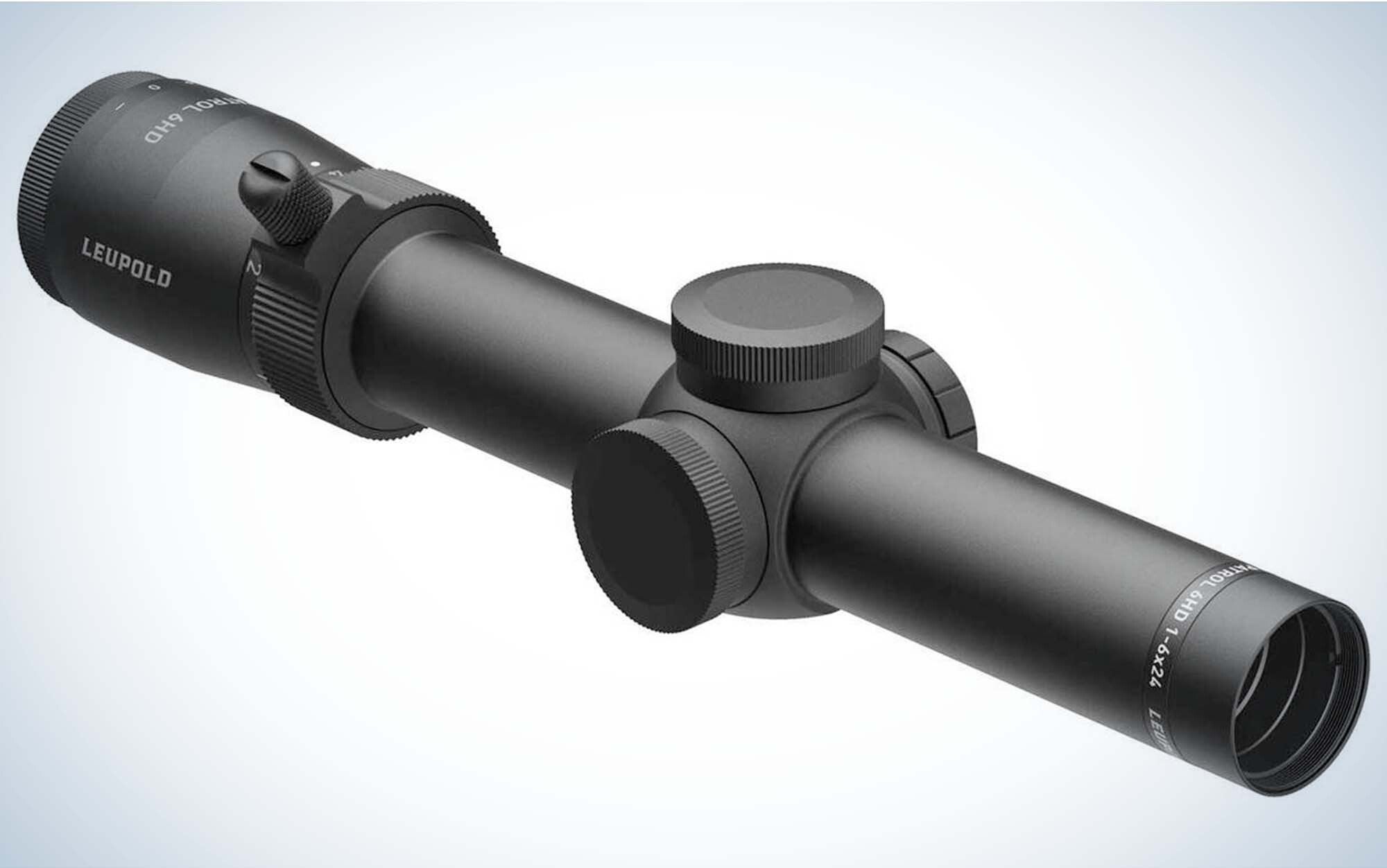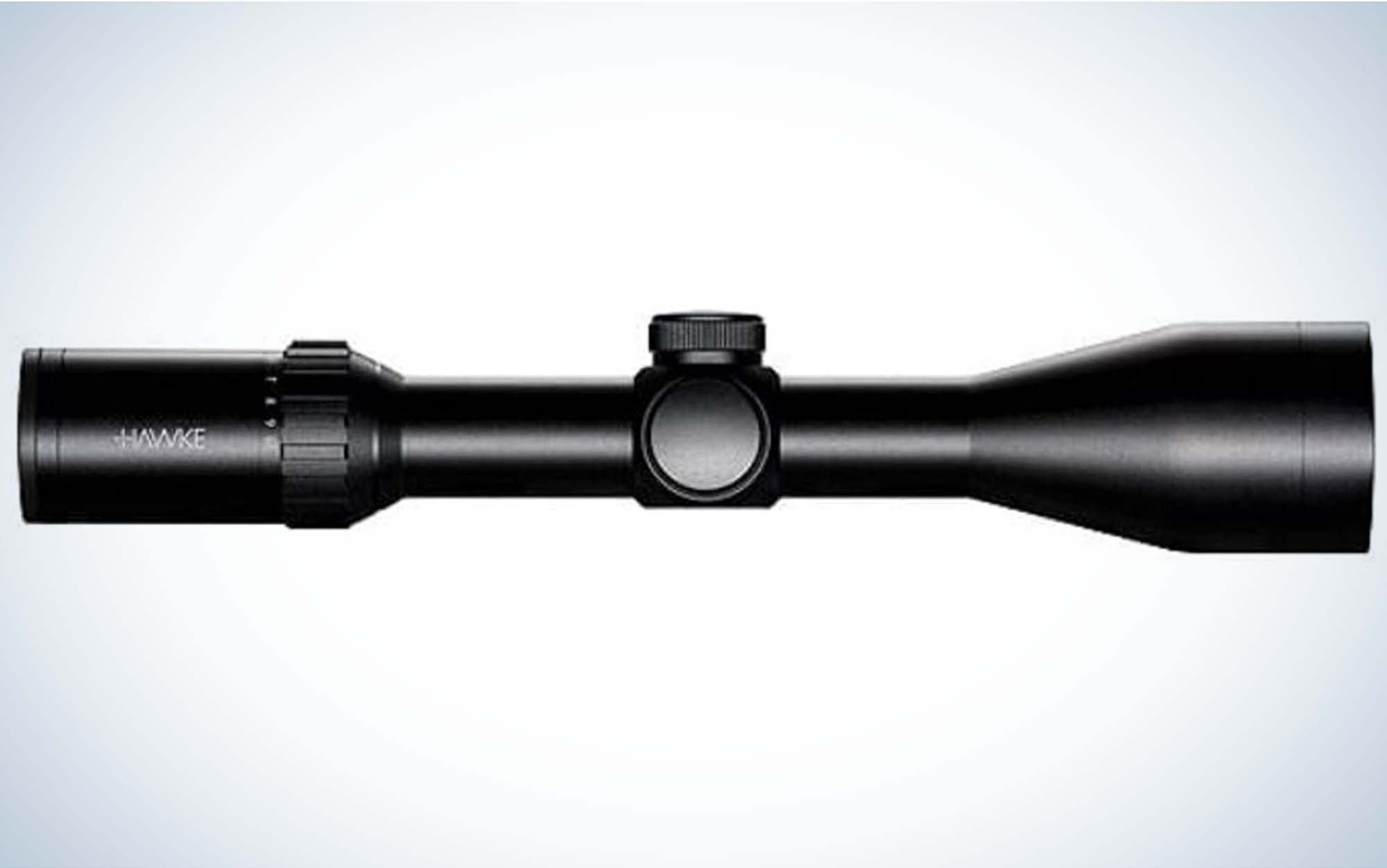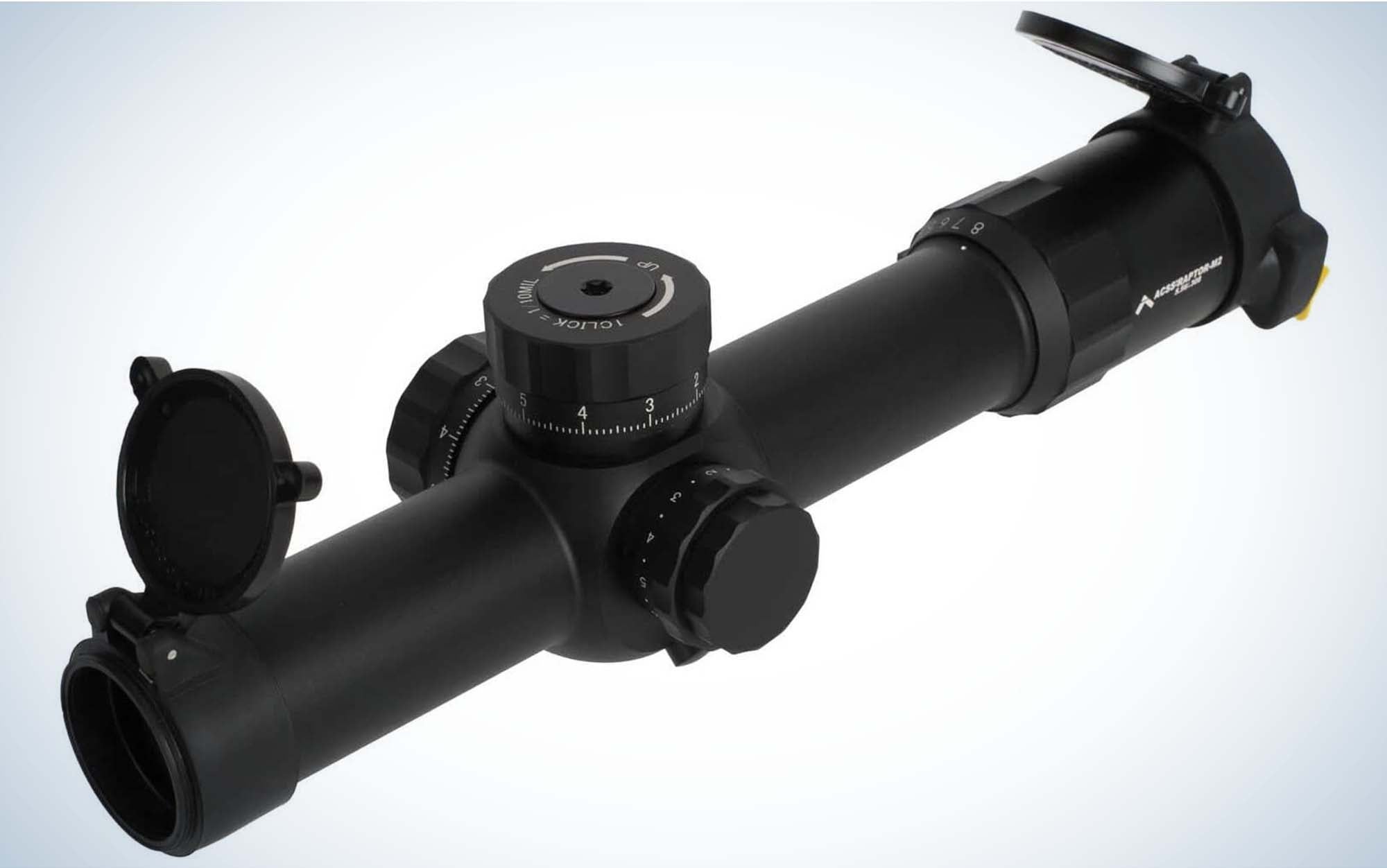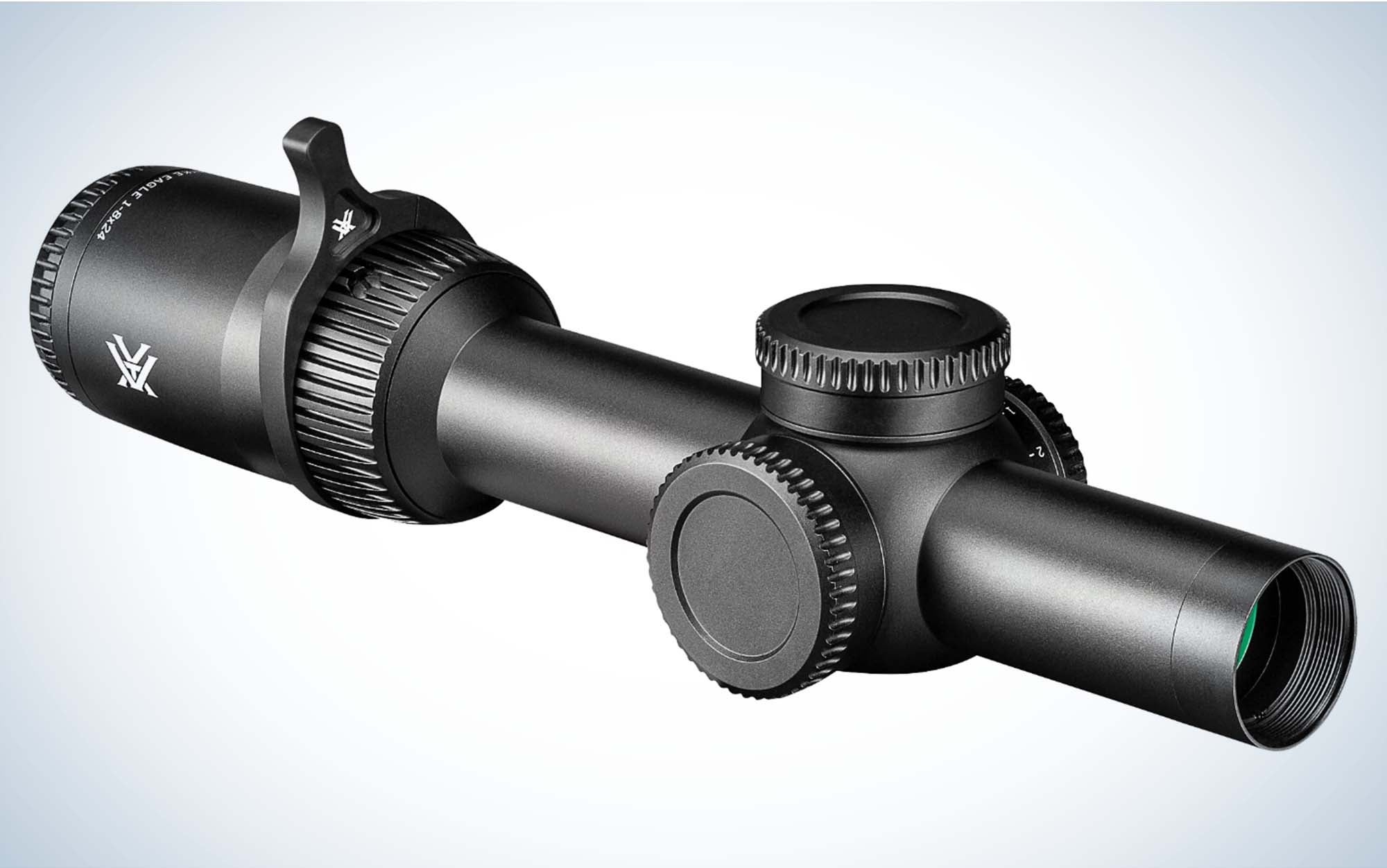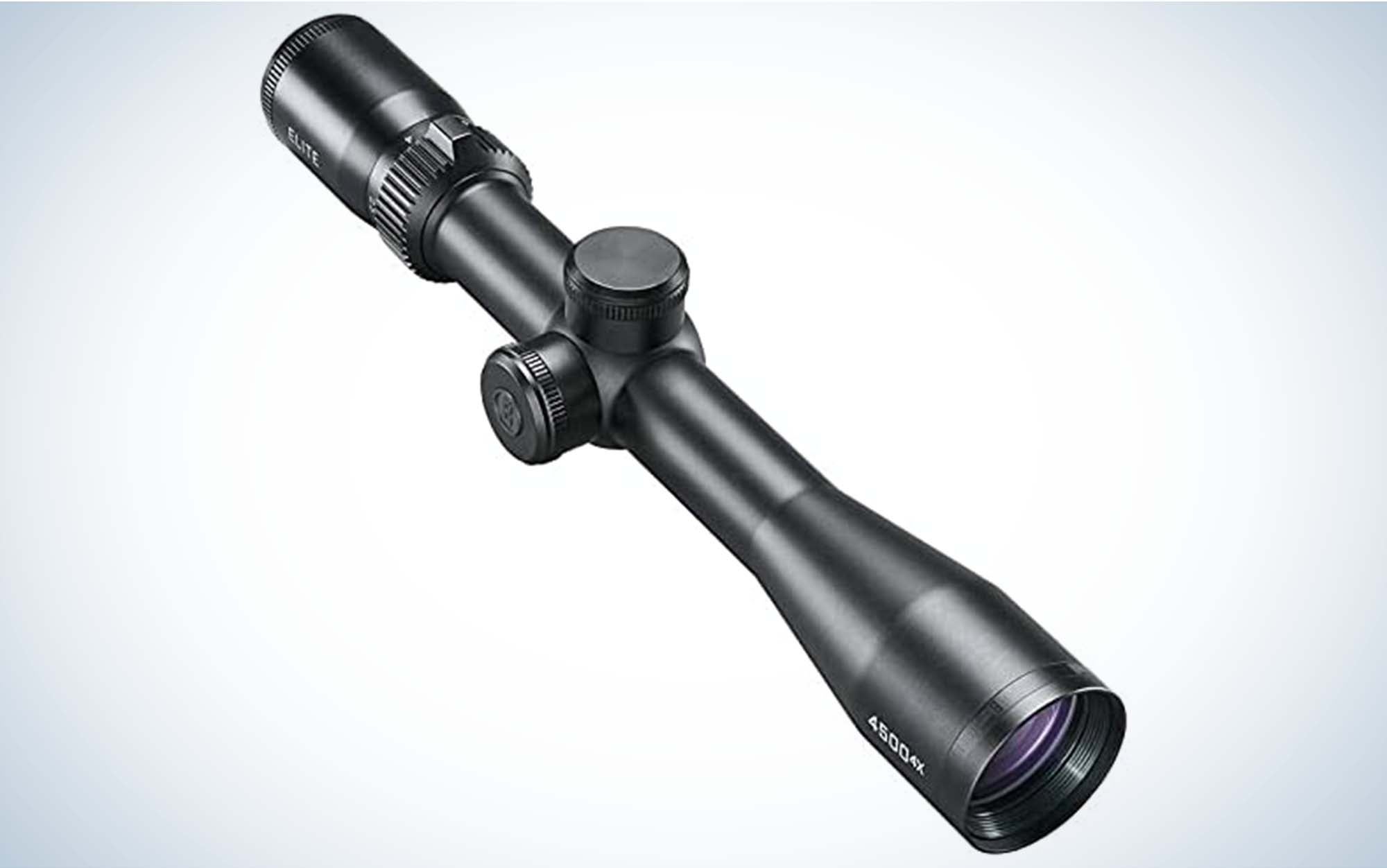The Best Rifle Scopes for Deer Hunting of 2023
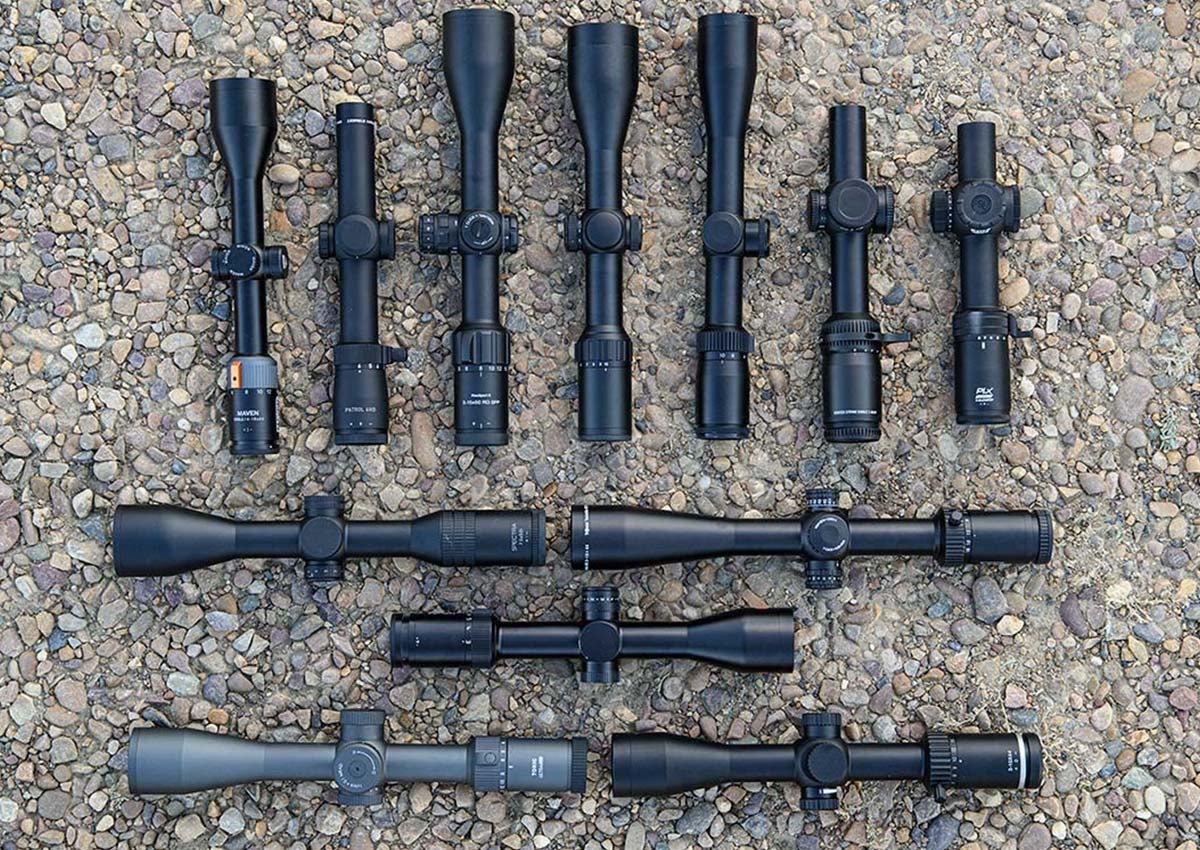
We may earn revenue from the products available on this page and participate in affiliate programs. Learn More ›
Because every deer hunt is unique in its details, a single rifle scope that can cover the close-in terrain of a Midwest whitetail hunt and precisely place a bullet across the open plains of mule deer country is a unicorn. The fast reticles and bright glass of woodland whitetail hunters won’t do for prairie mule deer hunters, who want precision reticles and lightweight scopes.
Given the divergent needs of America’s deer hunters, we’ve divided our group into two classes, those configured for classic whitetail hunting situations and those engineered to make long shots in challenging terrain. Each scope in this roundup has features that elevate it above its peers. For some, that’s best-in-class glass, for others, it’s extremely useful reticles. The rest have a combination of optics and controls that will increase your success during deer season no matter where or how you hunt. Here are the best rifle scopes for deer hunting from the Outdoor Life 2022 optics test.
- Best High-End: Leica Amplus 6 3-18x44i
- Best First-Plane: Trijicon Tenmile HX 3-18×44
- Best for Low-Light: GPO Spectra 7.5x50i
- Best Mule Deer Scope: Tract Toric Ultra HD 2.5-15×44
- Most Versatile: Riton X3 Primal 3-15×44
- Best Lightweight: Maven CRS.1 3-12×40
- Best for Blacktail: Leupold Patrol 6HD 1-6×24
- Best Budget: Hawke Vantage 30 WA IR 2.5-10×50
- Best for Big-Woods: Primary Arms PLX Compact 1-8×24
- Best for Treestands: Vortex Strike Eagle 1-8×24
- Best Throwback: Bushnell Elite 4500 2.5-10×40
How I Chose the Best Deer Hunting Scopes
Some of the scopes in this roundup are new for 2022 and were included in the rigorous evaluations of Outdoor Life’s annual optics test. For those, which include all but the Leica Amplus 6, I measured optical resolution on my resolution range, scored low-light performance against their peers, and measured the precision and repeatability of the reticle and turrets. I based my perspectives of the Leica’s merits on a rugged year of field work
But for each scope, I rate their ability to perform a series of shooting tasks, engaging targets at 20 yards, then at 100, and in 100-yard steps out to 600 yards. For each distance, I evaluate the reticle, image, and turret controls. I lugged all these scopes into a ladder stand and evaluated their abilities to make quick snap shots at close ranges.
For each, I make a subjective determination of optical quality, looking for distortions, optical aberrations, and any distracting jags of light. And I determine how quickly and precisely I can use the reticle.
Lastly, I assessed the extras, including the accessories that it ships with and each submission’s warranty.
Western Deer Rifle Scopes
Open-country deer hunters have specific requirements in a rifle scope. They want it to be light enough to carry for miles over rugged country. They want it to be fast, in case the buck of a lifetime busts out of a coulee before they can range distance and dial the turrets. And they want plenty of reticle references to place precise shots over longish distances. These five scopes have attributes that will put the muley or Coues deer of a lifetime on the wall. And they’re pretty good for antelope and Western predator hunting, too.
Best High-End: Leica Amplus 6 3-18x44i
Leica
Why It Made the Cut
Built around Leica’s legendary bright and crisp glass, the Amplus 6’s reticle and controls make this an essential deer hunting scope. The hash reticle offers 20 MOA of elevation and windage references, and the exposed turret makes dialing for distant hits fast and simple.
Key Features
- Weight: 23.6 ounces
- Magnification: 3-18X
- Objective Lens Diameter: 44mm
- Tube Diameter: 30mm
- Reticle Type: MOA hash in second plane
- Turrets: .25 MOA click values
- Illumination: Yes, 10 intensity levels
- Parallax: Yes
Pros
- Available in MOA or MRAD versions
- European style
- Excellent glass and coatings
- Precise parallax focus
- Abundant elevation and windage references
- Capped windage turret
- Center-point illumination
Cons
- Matte finish shows mars
- Busy reticle obscures view
Product Description
An elegant, extremely useful rifle scope, Leica’s Amplus line combines European glass and styling with precise reticle and turret combinations. Our sample was tuned to MOA references, but Leica also has a mil-based version of the Amplus. The scope is also available in higher magnification ranges (all are in the 6X zoom range, hence the 6 in the Amplus name) and larger objective lenses, but our relatively lightweight 3-18×44 is just about perfect for a Western deer rifle. The ability to re-zero the elevation turret without tools is a great feature, and the turrets turn with positivity and precision.
The reticle gets mixed reviews. Long-distance precision shooters will love the 20 MOA of elevation and windage hashes, but hunters used to clean, clutter-free reticles will complain that it’s overly busy and image-obscuring. Either way, the illuminated center aiming point can be muted or daylight-bright, depending on light conditions. It’s not cheap, but this is an heirloom-quality deer hunting optic.
Best First-Plane: Trijicon Tenmile HX 3-18×44
Trijicon
Why It Made the Cut
A true crossover hunting/target scope, the Tenmile HX and its first-plane reticle will dominate just about any mid- to long-distance shooting situation.
Key Features
- Weight: 24.4 ounces
- Magnification: 3-18X
- Objective Lens Diameter: 44mm
- Tube Diameter: 30mm
- Reticle Type: MOA hash/dot in first plane
- Turrets: .25 MOA click values
- Illumination: Yes, red and green
- Parallax: Yes
Pros
- Liberal mounting dimensions
- Precise first-plane reticle
- Exposed re-zeroable elevation turret
- Capped windage turret
- 15 yards to infinity parallax focus
- Low-profile mounting
- Ships with integral lens caps
Cons
- Busy reticle for holdover shooters
- Exposed turrets can inadvertently turn
- Pricey
Product Description
We debated whether to put this very capable 30mm scope in our precision or our versatile scope categories. That’s how much of a fence-rider this optic is, between a full-on steel-ringer for long-distance target shooters and walk-about Western hunters. Our best description of its place in the market is that this is the perfect hunting optic for a shooter who is familiar with first-plane reticles and turret dynamics of the long-distance target crowd but who wants a slim and capable hunting scope.
That describes an increasing number of Western deer hunters. They want all the precision aiming components of their big 5-25×56 target scopes with the portability of slim and nimble hunting scopes. The Trijicon satisfies both populations with a bright and precise scope that can cross over from long-range steel to open-country mule and Coues deer.
Best for Low-Light: GPO Spectra 7.5x50i
GPO
Why It Made the Cut
A classic German configuration updated for Southwest Coues deer and open-country mule deer hunters, this simple fixed-power scope places bullets with consistent precision and gathers light like few others in its class.
Key Features
- Weight: 21.7 ounces
- Magnification: 7.5X
- Objective Lens Diameter: 50mm
- Tube Diameter: 30mm
- Reticle Type: German 4 duplex in second plane
- Turrets: .1 milliradian
- Illumination: Yes, red center-point
- Parallax: No
Pros
- Extremely simple aiming dynamics
- Infinitely adjustable illumination
- Durable
- Fast aiming platform
- Turrets move with repeatable precision
- Fixed power increases brightness
Cons
- Fixed power limits utility
- Limited reticle references
Product Description
An extremely capable modern variation on a classic fixed-power hunting scope, the GPO Spectra cuts out all the nonsense of reticle references and turret dialing. This is a bright, durable fixed-power 7.5, a perfect pairing with a flat-shooting bolt rifle when you want to concentrate on hunting, not fiddling with your scope.
The glass is very good, the center-point illumination extremely variable, and the turrets turn with repeatable precision. For hunters who want to concentrate on making short- to mid-distance shots every time, this is a good choice. Extreme long-range hunters and shooters may want more focal control, a more sophisticated reticle, and tactical turrets. But for the rest of us, this is a very capable close- to mid-range scope that performs best in low-light hunting scenarios. It’s nice to see this style of scope back in the American marketplace.
Best Mule Deer Scope: Tract Toric Ultra HD 2.5-15×44
Tract Optics
Why It Made the Cut
The most capable cross-over target-to-hunting rifle scope in this year’s Outdoor Life optics test is a bright, tight, and precise first-plane scope that can reach out for both distant steel targets and open-country deer.
Key Features
- Weight: 28.3 ounces
- Magnification: 2.5-15X
- Objective Lens Diameter: 44mm
- Tube Diameter: 30mm
- Reticle Type: Hash-style in first focal plane
- Turrets: .1 milliradian
- Illumination: No
- Parallax: Yes, 10 yards to infinity
Pros
- Wonderfully responsive turret clicks
- First-plane reticle rare in this configuration
- Bright, distortion-free Schott glass
- Capped windage turret
- Versatile first-plane reticle
- Wide parallax range
- Handsome graphite finish
Cons
- Reticle utility begins at about 5X
- Needs clear center aiming point
- Illumination would help with close-in aiming
Product Description
The top cross-over scope of 2023, this bright and tactile first-plane hunting scope can put Western deer hunters on target out to 500 yards and beyond, depending on how familiar they are with reticle references. The robust pull-to-turn elevation turret and capped windage turret are both tuned to .1 MRAD click values, and the hash-style reticle offers 10 mils of drop and 8 mils of windage hold on either side of the non-distinct center aiming point.
This Tract Toric is a relatively light scope with abundant mounting options, making it a good pairing for a long-range hunting rig or even for many flat-shooting ultralight hunting rifles. Surprisingly, it’s also an excellent precision rimfire optic, with close-focus to 10 yards and a capable first-plane hash-style reticle that can put shooters on target at a wide range of magnifications and distances.
Most Versatile: Riton X3 Primal 3-15×44
Riton
Why It Made the Cut
A basic scope with just enough attributes to appeal to precision shooters, this is a scope that you can swap between platforms and seasons.
Key Features
- Weight: 24.8 ounces
- Magnification: 3-15X
- Objective Lens Diameter: 44mm
- Tube Diameter: 30mm
- Reticle Type: Hash-style in second plane
- Turrets: .25 MOA
- Illumination: No
- Parallax: Yes, 15 yards to infinity
Pros
- Capped, zero-resettable turrets
- Removable throw lever on magnification ring
- Versatile PDTR reticle
- Magnification range suited to open-country hunting
- Decent mid- to long-range target scope
- 25 MOA of holdover references
Cons
- Mild peripheral distortion
- Could use distance wind references
Product Description
A basic but versatile scope built around a clean second-plane reticle that enables hunters to make longish holdover shots, the Riton X3 Primal can also do solid work on mid-distance steel and most precision rimfire courses of fire. As befits an optic that expects to see rough country, the re-zeroable turrets are capped. But the fast and precise hash-style reticle, which has 25 MOA of elevation holds and 15 MOA of windage holds on either side of the center aiming dot, is designed for hunters who don’t have time to dial the turrets for an aiming solution. Pronghorn antelope, broken-country elk, mule deer just about anywhere, Coues deer, and even Western coyote hunters can benefit from the simple efficiency of this scope.
Deficiencies include slightly squinty glass that lost light before its 44mm peers and lack of illumination. I’m not sure that latter point is a demerit; I’ve rarely used an illuminated reticle in hunting situations.
Whitetail Deer Rifle Scopes
I’m guilty of a gross generalization here, but the woodland and farm-country deer hunter wants a rifle scope that delivers good low-light performance and can assist with fast shooting. Big, exposed tactical turrets don’t belong here, and neither do complicated reticles. These seven scopes all have some combination of optical superiority and fast aiming.
Best Lightweight: Maven CRS.1 3-12×40
Maven
Why It Made the Cut
While this charming little scope has plenty of attributes for a mountain hunter—light weight, bright glass, with just enough reticle references for mid-range work—it’s actually a wonderful whitetail scope. I’d stick with the CRS.1 for the widest utility, but if you want a little more magnification plus parallax focus, then go with the 4-16×44 CRS.2, which costs an extra $100.
Key Features
- Weight: 14.2 ounces
- Magnification Range: 3-12X
- Objective Lens Diameter: 40mm
- Tube Diameter: 1-inch
- Turret Click Values: .25 MOA
- Reticle Focal Plane: Second
- Illuminated Reticle: No
Pros
- Light and compact
- Parallax fixed at 100 yards
Cons
- Fixed parallax limits long-range work
- Bold styling too blingy for some hunters
Product Description
A stylish, no-frills scope from a direct-to-consumer brand, the CRS.1 is the bare-boned version of a new Maven platform. If you want side focus and a little more magnification, consider the 4-16×44 CRS.2, but most whitetail hunters want a simple, durable, versatile scope, and the CRS.1 is just the ticket. The CRS.1 offers a ton of mounting dimension on its 1-inch tube, responsive turrets tuned to ¼ MOA click values under protective caps, and a velvety power-changing dial, and just enough bling to add some pizazz to your rifle. It’s also one of the best rifle scopes under $500.
To my eye, this is a perfect companion to a flat-shooting ultralight mountain rifle for a hunter who intends to get within range to hold right on the target with the center of the classic German 4 reticle. But in case you need some holdover references for mid-distance shots, the CRS.1 provides three hashes that should get you on target out to 500 or 600 yards. In other words, you can still make that long shot across the bean field at that whitetail of a lifetime.
Best for Blacktail: Leupold Patrol 6HD 1-6×24
Leupold
Why It Made the Cut
This scope isn’t really intended for deer hunting. It’s designed for a wide range of firearms: AR platforms, or maybe dangerous-game rifles in Africa’s thickest thornbush, or even straight-wall lever guns. But its combination of low magnification, bright glass, and a laser-sharp illuminated aiming point make it an ideal treestand or whitetail brush scope.
Key Features
- Weight: 16.2 ounces
- Magnification: 1-6X
- Objective Lens Diameter: 28mm
- Tube Diameter: 30mm
- Reticle Type: Duplex in second plane
- Turrets: .25 MOA
- Illumination: Yes, 8-step intensity
- Parallax: No
Pros
- Extremely light weight
- Fast and open duplex reticle
- Durable
- Smart illumination system
- Excellent glass and coatings
Cons
- Not a precision scope
- Limited distance utility
Product Description
Let’s start with what the Leupold Patrol 6HD is not. It’s not a precision scope. It won’t help you win long-range steel-target competitions or even precision rimfire matches. But it’s one of the best of a new generation of low-power variable optics that can absolutely put venison in your freezer. Paired with a straight-wall lever gun or an AR, a slug gun, or just about any centerfire rifle, this is a workhorse of an optic that enables fast shots, quick follow-ups, and decent performance at the first and last light of the day.
The low-profile push-button center-point (that’s a lot of hyphenated terms) illumination is one of the Leupold’s best features. It’s dimmable for low-light conditions and can intensify to bright visibility in full sunshine. If you want to increase the utility of this platform, consider a custom elevation dial tuned to the ballistics of your favorite load. Otherwise, go with the out-of-box talent of this durable, athletic, and versatile scope.
Best Budget: Hawke Vantage 30 WA IR 2.5-10×50
Hawke Optics
Why It Made the Cut
Bright, affordable, and extremely versatile, this scope won’t win long-distance shooting medals, but it will place bullets in deer country with confidence.
Key Features
- Weight: 21.1 ounces
- Magnification Range: 2.5-10X
- Objective Lens Diameter: 50mm
- Tube Diameter: 30mm
- Turret Click Values: .25 MOA
- Reticle Focal Plane: Duplex in the second plane
- Illuminated Reticle: Yes, red and green center dot
Pros
- Simple aiming system
- Durable capped turrets
- Red and green center-dot illumination
- 60 MOA internal adjustment
- Extremely affordable
Cons
- No side focus
- Indistinct turret clicks
- Meh glass
Product Description
The Outdoor Life optics test team still doesn’t know how Hawke packs so much performance in such an affordable package. This is one of the best all-around scopes in the 2022 test. If it’s not built for long-distance (or even mid-distance) precision, it’s fast, bright, and nimble in many close-in and moderate distances. The best feature of the Vantage is the bold reticle with a precise, illuminated (red and green) center aiming point. We also like the low-light performance of the big 50mm objective lens.
The basic Vantage 30 WA is a good value, but if you want more mid- and longish-distance performance, consider the tactical version of this scope, with exposed high-profile turrets and a holdover reticle tuned to the ballistics of standard .223 and .308 loads. That version is maybe the ultimate deer scope.
Best for Big-Woods: Primary Arms PLX Compact 1-8×24
Primary Arms
Why It Made the Cut
A personal-defense scope that can hold its own in ground-blind and treestand hunting situations, the Primary Arms is fast and surprisingly precise with the right loads.
Key Features
- Weight: 16.9 ounces
- Magnification Range: 1-8X
- Objective Lens Diameter: 24mm
- Tube Diameter: 30mm
- Turret Click Values: .1 MIL
- Reticle Focal Plane: Open-horseshoe in first focal plane
- Illuminated Reticle: Yes
Pros
- Close-quarters illuminated reticle
- Reticle zooms out to offer precise aiming points
- Reticle tuned to 5.56/.308 ballistics
- Night-vision compatible
- Extremely light and bright
- Ultra-wide field of view
- Useful dovetail throw lever
Cons
- Expensive
- Limited low-light performance
Product Description
Along with the Leupold Patrol 6HD, this is a new breed of deer scope—a low-power variable optic with plenty of chops for close to mid-range hunting. The best feature of the Primary Arms PLX, which is really designed for use on personal-defense AR platforms, is its first-plane reticle that zooms from close-quarters 1-power out to reveal a very useful holdover reticle at 6- to 8-power. That reticle is tuned to the bullet drops of standard 5.56 and .308 loads.
Combined with excellent illumination (which is compatible with night vision) and sharp and bright Japanese glass, this is a scope that can easily be swapped between deer rifles, slug guns, AR semi-autos, and even big-bore dangerous-game rifles. Don’t laugh, but at a shade over a pound, I wouldn’t be shy about mounting this to a sheep rifle, especially if my approach passed through bear country.
Best for Treestands: Vortex Strike Eagle 1-8×24
Vortex
Why It Made the Cut
Along with the Primary Arms PLX, this is the leading edge of a new type of close-quarters deer scope that is a perfect match with a AR, slug gun, or straight-wall cartridge rifle.
Key Features
- Weight: 23.9 ounces
- Magnification Range: 1-8X
- Objective Lens Diameter: 24mm
- Tube Diameter: 30mm
- Turret Click Values: .25 MOA
- Reticle Focal Plane: Open-horseshoe in first focal plane
- Illuminated Reticle: Yes
Pros
- Wonderfully versatile illumination
- Reticle offers useful holdovers at higher magnifications
- Short stature fits carbine rifles
- Tons of internal adjustment for turret dialers
- Battle-hardened hardware
- VIP warranty
Cons
- Limited to short- to mid-distance shooting
- Not great low-light performance
Product Description
You can pretty much copy what we said about the Primary Arms PLX to recommend this wonderful close-quarters scope from Vortex. It has best-in-class rapid target acquisition inside 50 yards, but its first-plane reticle enlarges to reveal some sweet and useful aiming points that make it useful for 400-yard precision. This is really an AR scope that can engage targets inside houses and then place precise shots across a field. Those attributes make it great for Midwest whitetail hunters (or Canadian bear hunters) who expect to see game right under their stand but need to be prepared to take shots out across a clearing. Paired with any number of firearms platforms, this has very positive and precise controls, from turret clicks to the power-changing dial.
Best Throwback: Bushnell Elite 4500 2.5-10×40
Bushnell
Why It Made the Cut
This is your father’s deer scope, with some sweet Gen Y updates. Simple, reliable, and fast, the Bushnell has the benefit of excellent coatings and decent glass.
Key Features
- Weight: 19.7 ounces
- Magnification Range: 2.5-10X
- Objective Lens Diameter: 40mm
- Tube Diameter: 30mm
- Turret Click Values: .25 MOA
- Reticle Focal Plane: Second
- Illuminated Reticle: No
Pros
- Very appealing price
- 30mm tube provides wide adjustment range
- Duplex reticle delivers fast aiming
- Excellent optical coatings
- Ample 4.3-inch eye relief
Cons
- Underwhelming glass
- Lack of illumination limits utility
Product Description
This is one of the best rifle scopes for deer hunting for every shooting situation. Want to put a scope on your kid’s new .243, this will place bullets reliably. Want a durable scope for your old .300 Win. Mag.? This will get the job done. It’s a workaday scope without a ton of flash, but the Elite 4500 is a smart update from the durable Bushnells that owned the whitetail woods 20 years ago.
The bold duplex reticle in the second focal plane is fast, and for those shooters who want to dial for distant shooting solutions, the capped turrets turn with precision and positivity. The glass is a little disappointing, owing to the Elite 4500’s placement as a budget scope, but unless you’re shooting in the very last feeble light of day, you’ll hardly notice.
Things to Consider Before Buying a Rifle Scope for Deer Hunting
Deer hunters don’t really need a ton of features in their rifle scopes. A clear and clean reticle that lets them place bullets quickly and with mid-range precision. A bombproof build that will endure the hardships of the field. And versatility that will help hunters succeed in the deep woods or the open fields where you’ll find deer everywhere. That’s about it.
If deer are similar in their habits across their range, hunting styles differ by geography and species. The needs of an Eastern whitetail hunter (or Cascades blacktail hunter) are vastly different from those of an open-country Western mule deer or Coues deer hunter. For the former, fast reticles and the ability to make quick, reactive shots inside 100 yards are key. For the latter, lightweight builds that offer plenty of reticle references will enable shots that can stretch out to 400 and 500 yards will put bucks on the pole.
FAQs
Q: What magnification scope is best for hunting deer?
The best magnification scope for deer hunting depends on the deer you’re hunting. For close-range whitetails, a 2-10-power scope has plenty of magnification. For an open-country mule deer, a 3-18-power is a better option. Along with magnification, consider the reticle type. A second-plane reticle will stay the same size regardless of magnification, but most bullet-drop references assume shooters are on the highest power. A first-plane reticle will appear larger with magnification, but the references remain constant regardless of power.
Q: Is a 50mm scope better than a 40mm scope for hunting deer?
The larger the objective lens, the brighter the image will appear. So for deer hunters who expect to be making shots in the very first light of morning or the last light of evening, that larger objective lens will buy them some time, and boost their confidence in low-light situations. For walk-about hunters who are looking for lighter, lower-profile scopes, the 40mm class is a better option, at least until they need to make a long shot in failing light.
Q: Who makes the highest-quality rifle scopes for hunting?
That’s a tough question—who makes the highest-quality hunting scopes. There’s a lot to consider. If you evaluate the optical performance, then the tip goes to the European brands with excellent glass and optical coatings, including Leica, Zeiss, and Swarovski. But if you’re talking reticles and turrets, then you should consider brands such as Nightforce, Sig, Leupold, and Trijicon.
Q: Is a 10-power scope enough for hunting?
The short answer is a resounding yes; a 10-power scope is enough for hunting. The more useful answer is that it depends on your hunting area. In dense hardwoods or evergreen groves, where shots are likely to be inside 100 yards, a low-power scope (2- to 6-power) is adequate. In the open country where you might hunt mule deer, you want more magnification, so a 3- to 18-power scope is a better option. You might consider 10-power as the tipping point between close and distant deer scenarios. For Eastern woodlands whitetail hunters, it should be considered maximum power. For Western mule deer hunters, it should be considered mid-range magnification.
Final Thoughts
Just as no two deer hunts are the same, no two deer hunters will have the same needs for their rifle scopes. But the requirements for an Eastern or Midwestern deer hunter are so wildly different than those of their Western brethren that we divided this class in half, with scopes for Western hunters showing their long-distance precision capabilities, and those for woodland hunters having simpler reticles and fast, intuitive builds.
You may want a scope that splits the difference and offers a reticle that zooms from close-in visibility to mid-distance precision. We have a few low-power variable scopes in this mix that you should consider. And for those who want a scope that can reach way out to a distant buck and serve as a long-range target scope, consider the first-plane, tactical-turret models in this group. Regardless of your tactics or where you hunt deer, you’ll have no problem finding one of the best rifle scopes for deer hunting in these capable contenders.
The post The Best Rifle Scopes for Deer Hunting of 2023 appeared first on Outdoor Life.
Articles may contain affiliate links which enable us to share in the revenue of any purchases made.
Source: https://www.outdoorlife.com/gear/best-rifle-scopes-for-deer-hunting/

